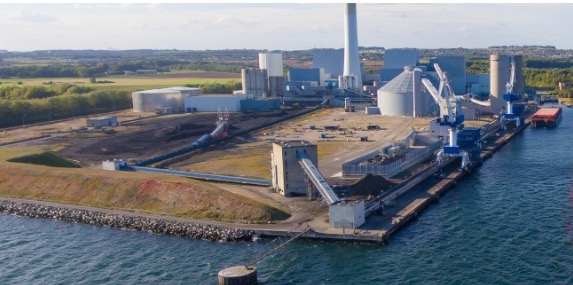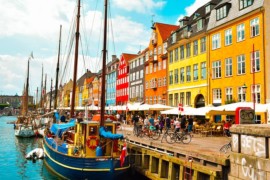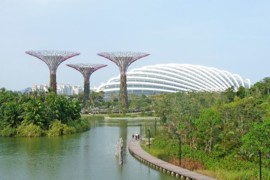
One of the biggest biomass-fuelled Combined Heat and Power (CHP) stations in the world is in Aarhus. The Studstrup plant began to burn wood pellets instead of coal on 10 October, bringing green heating and electricity to city residents and businesses whilst reducing CO2 emissions by 1 tonne per resident.
One of the biggest CHP plants in Denmark is ready to supply green district heating to Aarhus and the surrounding area. After over two years of intense work converting the Studstrup plant, the Minister for Energy, Utilities and Climate, Lars Chr. Lilleholt opened a plant able to burn wood pellets instead of coal on 10 October.
I am delighted that we can now open the new, green Studstrup plant, which will be able to supply green district heating to Aarhus and green electricity to the Danish grid. That means a significant contribution to the green revolution, and we’re well on the way to an energy system that is green, independent and economically sustainable, says Thomas Dalsgaard, Group Director, DONG Energy.
Now, Studstrup Power Station in Denmark is ready to produce energy from wood pellets
instead of coal. A great step towards more green and sustainable energy production.
A milestone for Aarhus’ climate targets
The recently completed conversion of Studstrup is the biggest single event in the entire green revolution for Aarhus. The switch from coal to wood pellets at Studstrup not only gives the biggest total CO2 reduction in Aarhus to date, but is also the biggest conversion to green energy in Denmark.
Kristian Würtz, City Councillor for Technical Services and the Environment, looks forward to the massive benefits of switching from coal to wood pellets.
The conversion of Studstrup means that we have taken a massive and important step towards fulfilling our ambition of Aarhus becoming CO2-neutral by 2030. Green heat means that CO2 emissions for everyone in the city can be reduced by one tonne, from six to five tonnes per resident, he says.
Green conversion of the Studstrup plant provides a lever for the city of considerable dimensions.
Burning wood pellets at Studstrup will mean a lot for achieving our climate targets. It gives us the incentive to go further with the green revolution, something we intend to pursue to a greater degree with residents and businesses, says Würtz.
Aarhus, the second largest city in Denmark opens its 100% biomass heat network at the beginning of October.
The cogeneration plant at Studstrup has in fact switched to biomass since 10 October: it is now burning wood instead of coal, which will enable the city to have clean energy while reducing CO2 emissions d 1 tonne per resident.
The change is described as “historic” by the Danish authorities. This would be the biggest event in the city of Aarhus as part of the energy transition and even the biggest event for the whole country.
Kristian Würtz, Environment Commissioner for the city of Aarhus, insists on the progress made:
The conversion of the Studstrup power plant allows us to take a giant step forward to make the city CO2-neutral by 2030. The green heat produced will reduce emissions by one tonne per year per resident: Tons per resident to 5.
This is, of course, not the only initiative of the city of Aarhus: a year and a half ago it built two electric boilers capable of generating energy at the urban level when the wind turbines are at full capacity.
The city therefore intends to use all means at its disposal to achieve its objectives: heat networks, photovoltaics, biomass, and in a complementary way.
The conversion of the plant makes it one of the largest in the world. It will provide heat to 106,000 households and produce an equivalent amount of electricity to the consumption of 230,000 homes.







